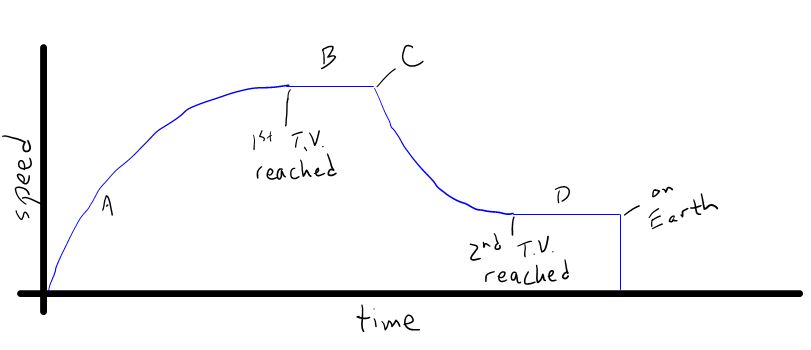Introduction
When a body is in motion on a rough surface, or through a viscous medium such as air or water, there is a resistance to motion because of the interaction of the body with its surroundings. We call such resistance a force of friction. Forces of friction are very important in our everyday lives. Forces of friction allow us to walk or run and are necessary for the motion of wheeled vehicles.
Static and Dynamic (Kinetic) Friction
 Consider a block on a horizontal table, as shown in the figure. If we apply an external force, F, to the block, acting to the right, the block will remain stationary if F is not too large. The force that keeps the block from moving acts to the left and is called the frictional force, Ff. As long as the block is in equilibrium, F = Ff. Since the block is stationary, we call this frictional force the force of static friction. The word static means stationary, or unchanging. Experiments show that this force arises from the electrostatic forces between atoms or molecules where the surfaces contact.
Consider a block on a horizontal table, as shown in the figure. If we apply an external force, F, to the block, acting to the right, the block will remain stationary if F is not too large. The force that keeps the block from moving acts to the left and is called the frictional force, Ff. As long as the block is in equilibrium, F = Ff. Since the block is stationary, we call this frictional force the force of static friction. The word static means stationary, or unchanging. Experiments show that this force arises from the electrostatic forces between atoms or molecules where the surfaces contact.
 If we increase the magnitude of the applied force, F, the block will eventually slip. When the block is on the verge of slipping, the force of static friction, Ff-static, is at its maximum. When F exceeds Ff-static-max, the block moves and accelerates to the right. When the block is in motion, the retarding force actually becomes less than the force of Ff-static-max. When the block is in motion, we call the retarding force the force of kinetic friction, Ff-kinetic. The work kinetic means moving, or changing. The graph below shows how the frictional force changes as the applied force, F is increased.
If we increase the magnitude of the applied force, F, the block will eventually slip. When the block is on the verge of slipping, the force of static friction, Ff-static, is at its maximum. When F exceeds Ff-static-max, the block moves and accelerates to the right. When the block is in motion, the retarding force actually becomes less than the force of Ff-static-max. When the block is in motion, we call the retarding force the force of kinetic friction, Ff-kinetic. The work kinetic means moving, or changing. The graph below shows how the frictional force changes as the applied force, F is increased.
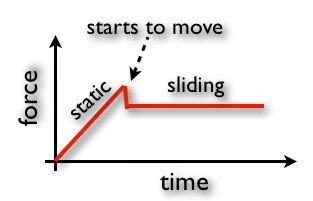
Coefficients of Friction
Experimentally, scientists have found that the forces of friction, both static and kinetic, are proportional to the normal force, FN, acting on the block. The experimental observations can be summarized by the following laws of friction:
- The force of static friction between any two surfaces in contact is opposite the applied force and can have values given by

where the dimensionless constant μs is called the coefficient of static friction, and FN is the normal force. The equality in the above equation holds when the block is on the verge of slipping. The inequality holds when the applied force is less than this value. - The force of kinetic friction acting on an object is opposite to the direction of motion and is given by

where μk is the coefficient of kinetic friction. - The values of μk and μs depend on the nature of the surfaces in contact, but μk is generally less than μs. Typical values range from 0.05 for smooth surfaces to 1.5 for rough surfaces.
The coefficients and the role they play in motion can be seen in the graph and animation below.

Example - pulling a mime
A) the force needed to start the box to move
B) the force needed to keep the box moving at a constant speed
C) the acceleration of the box if the force is kept constant after starting the box to move.

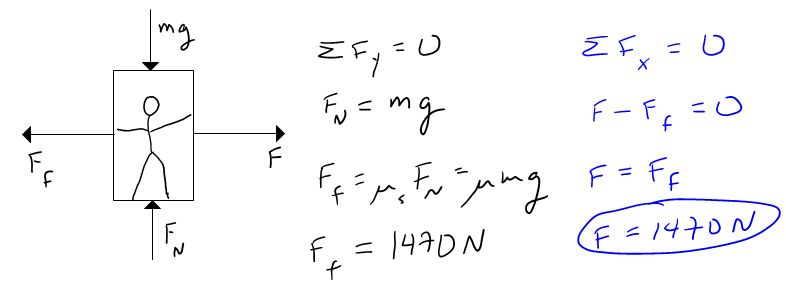
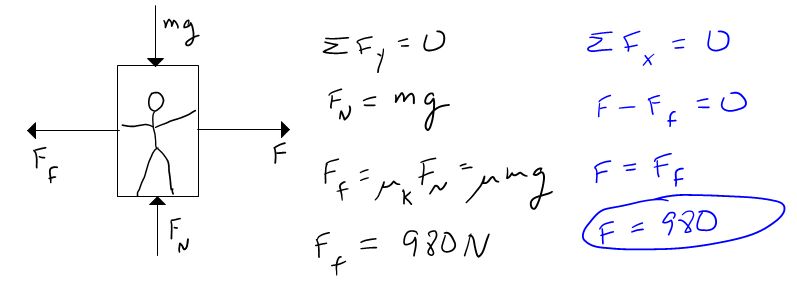

Example - Encyclopedia Down


Fluid Friction
For all of the projectile motion problems, we ignored air resistance, but in reality, air provides significant resistance to objects that try to move through it.
This resistance is a type of friction known as fluid friction - where a fluid in physics is any liquid or gas.
The magnitude of the force of fluid friction depends upon several quantities:
- the square of the relative velocity between the object and the fluid
- the density of the fluid
- the cross-sectional area of the object perpendicular to its motion through the fluid
- the drag coefficient - a number that depends upon the shape of the object (is it streamlined line a bullet or bulky like a UPS truck?).
Luckily for you, the formula and the math for calculating fluid friction is not required in high school phyiscs.
Fluid Friction and Terminal Velocity
Because fluid friction depends upon velocity, as an object speeds up in a fluid, the fluid frictional force against it increases.
Consider the case of a ball dropped off of a building as shown in the diagrams below.
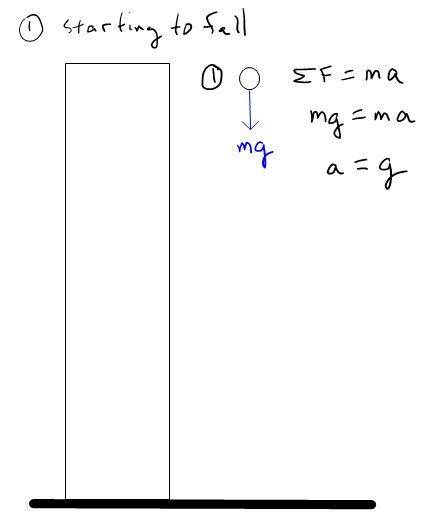
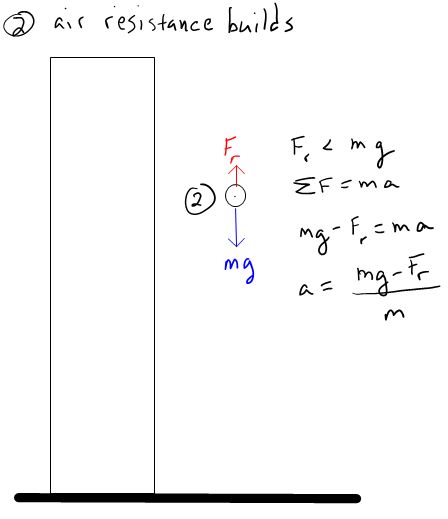
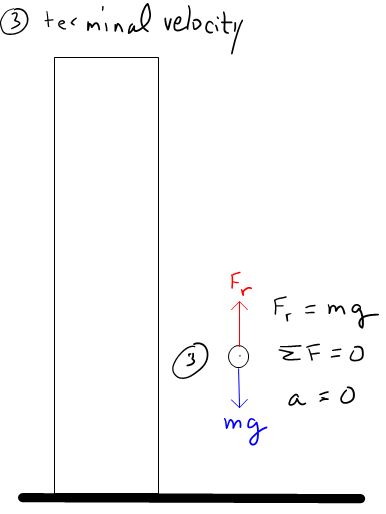
At some point while falling, an object might reach a speed where the fluid forces pushing up against it balance the weight of the object. When this happens, the object no longer accelerates downwards - it has reached its terminal velocity.
Example - Terminal velocity
The shape of the object.
The density of the fluid it is falling through.
The horizontal cross-sectional area of the object
Example - the skydiver
A) falls from a helocopter until he reaches terminal velocity
B) falls at terminal velocity
C) opens a parachute
D) falls at terminal velocity until he reaches the Earth.
